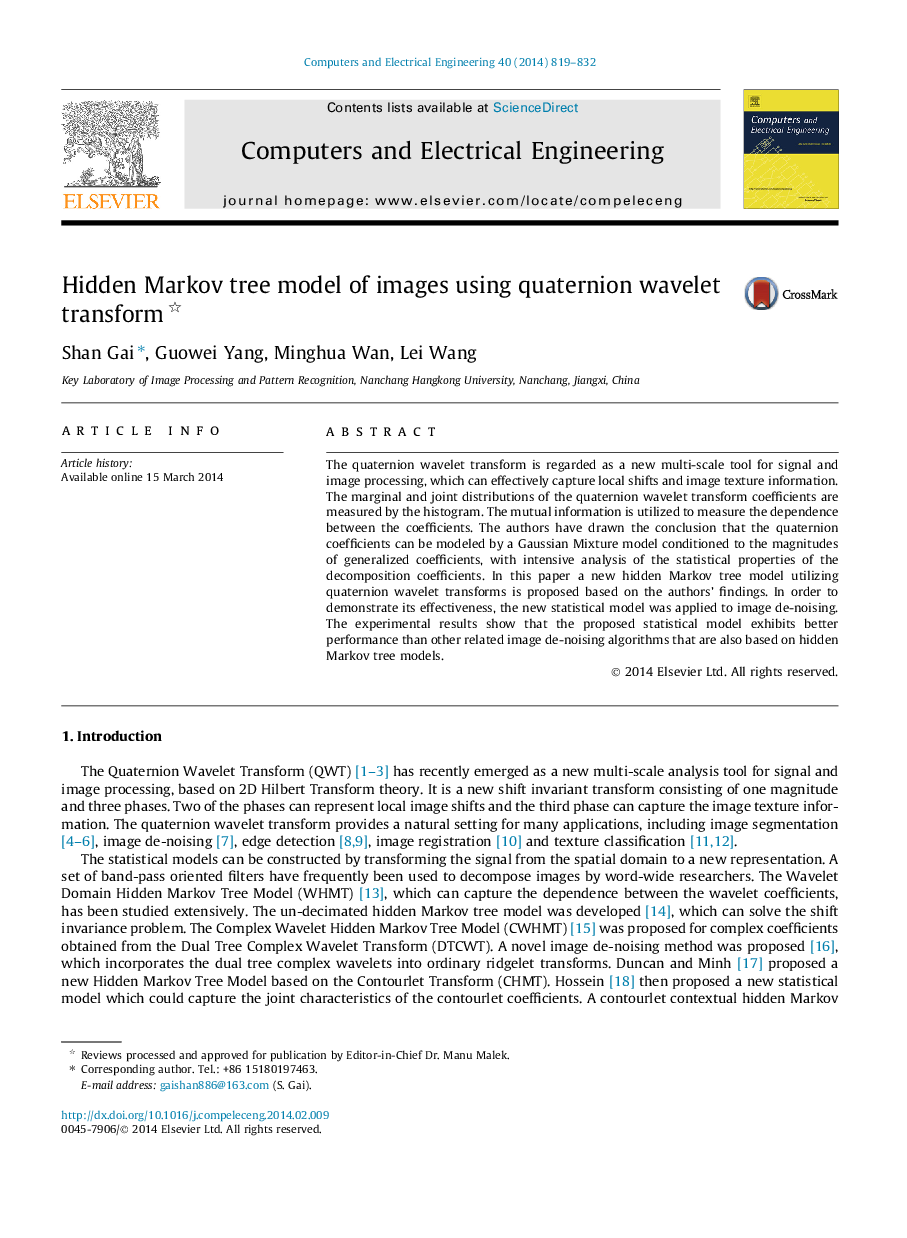| کد مقاله | کد نشریه | سال انتشار | مقاله انگلیسی | نسخه تمام متن |
|---|---|---|---|---|
| 454954 | 695324 | 2014 | 14 صفحه PDF | دانلود رایگان |
• With intensive study, we find the marginal and joint distribution of the quaternion wavelet transform coefficients.
• Gaussian mixture model is used to capture the statistical characteristics of the quaternion wavelet coefficients.
• The new non-training image de-noising algorithm based on hidden Markov tree is proposed.
• We examine the effect of the proposed image de-noising algorithm compared with other conventional methods.
The quaternion wavelet transform is regarded as a new multi-scale tool for signal and image processing, which can effectively capture local shifts and image texture information. The marginal and joint distributions of the quaternion wavelet transform coefficients are measured by the histogram. The mutual information is utilized to measure the dependence between the coefficients. The authors have drawn the conclusion that the quaternion coefficients can be modeled by a Gaussian Mixture model conditioned to the magnitudes of generalized coefficients, with intensive analysis of the statistical properties of the decomposition coefficients. In this paper a new hidden Markov tree model utilizing quaternion wavelet transforms is proposed based on the authors’ findings. In order to demonstrate its effectiveness, the new statistical model was applied to image de-noising. The experimental results show that the proposed statistical model exhibits better performance than other related image de-noising algorithms that are also based on hidden Markov tree models.
Figure optionsDownload as PowerPoint slide
Journal: Computers & Electrical Engineering - Volume 40, Issue 3, April 2014, Pages 819–832
